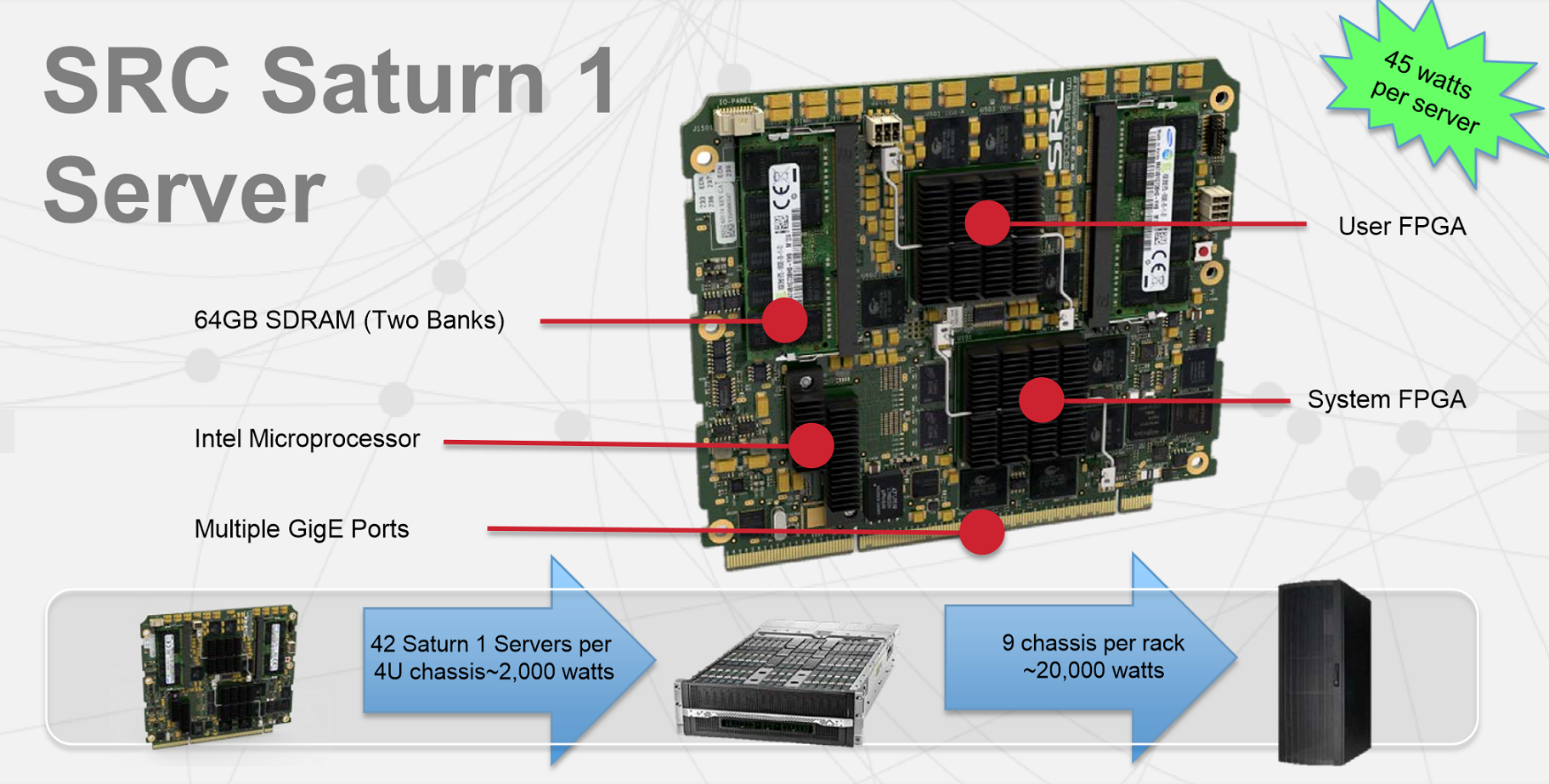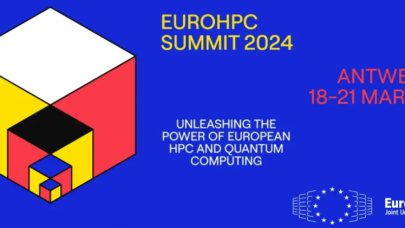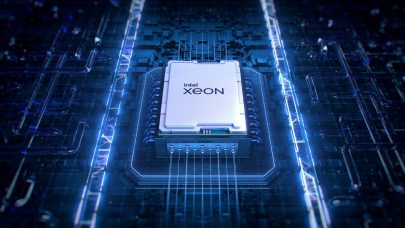The SRC Saturn 1 server debuted today, built by reconfigurable computing specialists SRC Computers and positioned as an x86 alternative for high-volume workloads in hyperscale computing and big data analytics.
While we have seen several FPGA-based server solutions come to market in the past year, the Saturn-1 is distinguished by its pedigree and insulation from the usual complexities of FPGA programming. SRC was founded in 1996 by supercomputing innovator Seymour R. Cray and Intel investor and former director James Guzy. Cray was focused on how to get the most horsepower out of a very small number of processors and how to harness the power of multiple processors, while Guzy et. al. at Intel were building a general purpose processor designed for the personal computer. Recognizing that there are limitations to using a general purpose processor for very specific tasks, the duo came up with the platform that would become the Saturn 1.
For 12 years, the FPGA-based server and development platform CARTE have been used for a variety of defense and intelligence solutions, but SRC thinks the time is right to enter a wider market.
Vice President of Sales and Marketing at SRC Computers Dave Eaton explained to HPCwire that many of the requirements developed for defense carry over to high-performance enterprise apps, for example the push for more performance per processor, minimized footprint and reduced power.
“The server market is starting to ask a lot of the same questions,” says Eaton.
Moore’s law-driven performance boosts based on faster clock rates petered out in the mid-2000s. Multicore technology adds several cores to one die to increase throughput, but it doesn’t address the inherent problem: microprocessor performance has hit a wall. Unlike the x86 microprocessor, which uses 90 percent of its resources to store and shuttle data to the remaining 10 percent, the SRC sheds unnecessary overhead by using only the logic required by the workload. All instructions are executed at the same time – in just one clock cycle. SRC reports that the server is up to 500x faster than traditional x86 designs.
SRC has put over $100 million into designing this new platform, which has been hardened by over a decade of government use. The firmware is version 8 and CARTE is on version 12.
The Saturn 1 server cartridge is available from SRC Computers as a standalone server and through HP as part of its Moonshot chassis. As depicted in the image above, there are two Stratix-IV FPGAs on one card. The top one, the user FPGA, is completely available for the customer’s application, and the system FPGA below that, has software written by SRC that ties all the components together into a unified system. There are also two memory banks, a small four-core Intel processor, and the edge connector which has multiple Ethernet ports.
The server cartridges can be dropped into an HP moonshot chassis, which has a passive backplane and is processor agnostic. Each server runs at 45 watts, and with 42 Saturn 1 servers in a Moonshot chassis, the power load is 2000 watts. A rack outfitted with 9 chassis draws about 20,000 watts.
The server is equipped with Stata-IV FPGAs, but the platform is actually processor-agnostic. Earlier iterations employed Lucent, Altera, Xilinx, before returning to Altera with the current version. The driving factor for FPGA selection is access to pure horsepower and avoidance of unnecessary industry-specific add-ons.
The deterministic nature of the platform means that programs executed on the Saturn 1 will run with the exact same performance every single time. Other benefits compared with traditional x86 processors include orders of magnitude performance increases, reduction in processing power consumption, and smaller footprint.
Another benefit that SRC emphasizes is ease-of-use. The time and effort required to program FPGAs has kept them from enjoying wider adoption. Instead of being relegated to a low-level language like Verilog, SRC customers can use the custom development environment, CARTE, to write programs with a familiar high-level language, such as C+, Python and Ruby, so the server can be deployed just like a regular x86 server. SRC reports that companies have ported their applications to the Saturn server in just three days.
As for HPC-specific use cases, Eaton says that the Saturn 1 is ideal for addressing hot spots – that specific place in a program or algorithm that burns up 90-95 percent of CPU cycles. He shares the example of a financial institution that prices options using a Black-Sholes algorithm souped-up with additional CPU-intensive constants and adjustments. Since moving over to Saturn 1, shops like this one are seeing 20-30x speedups above what they were getting on the most-performant x86 machines. This also allows them to add even more features to the algorithms without slowing down the processing, says Eaton.
For those worried about the lack of flexibility of the FPGA model, it may be helpful to know that processors can be completely reprogrammed in a little less than a second. This means servers can be optimized on the fly to match peak workloads. For example, using the Saturn 1, a company like Google would be able to configure the processors to handle search requests during peak daylight hours and then at night when searches are less frequent, the server environment could be optimized for Web crawling.
“You’ve heard about the search for the software-defined server?” inquires Eaton. “It’s one thing to have a software-defined server where I can change memory configuration or change how much hard drive space is there, now we’re talking about defining the actual processor on the server itself with software.”
The SRC server is shipping immediately, however very large orders of several hundred systems may take 6-8 weeks to satisfy. Servers cost $19,950 each and volume pricing is available. Licenses for the CARTE development environment are $14,000 per seat and the company offers a three-day workshop for learning CARTE that is priced according to the number of participants. Support for both the software and hardware comes through SRC if desired, or if the HP Moonshot chassis version is purchased, HP can provide support based on the customer needs.





























































